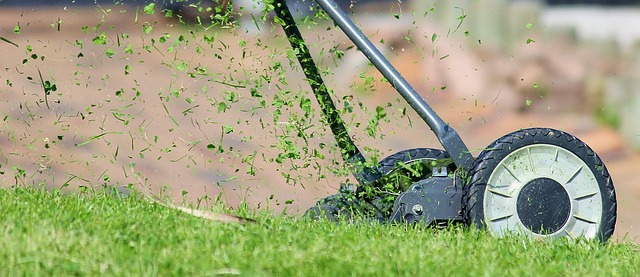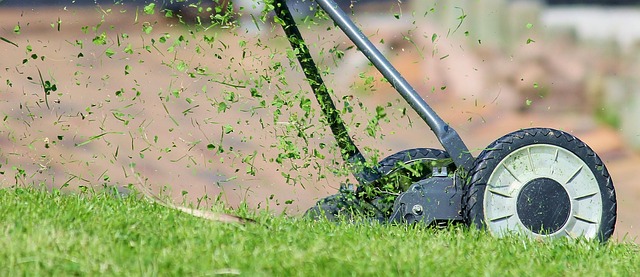Soil compaction in Castle Pines' lush landscapes is a major issue, affecting both underground utilities and lawn health. To prevent this, effective vegetation management within utility easements is crucial. By employing strategic planting, proper irrigation, aeration techniques, regular trimming, and mowing, the community can maintain scenic outdoor spaces while safeguarding essential utilities. Case studies demonstrate that innovative vegetation management strategies, such as eco-friendly aerating technologies, lead to improved grass growth, reduced maintenance, better water infiltration, lower irrigation demands, and preserved ecosystem integrity in Castle Pines.
In Castle Pines, proper vegetation management is crucial for mitigating lawn soil compaction, especially around utility easements. This compacted soil can not only hinder the growth of turfgrass but also impact underground utilities. Understanding the severity of this issue and its long-term effects on both landscapes and infrastructure is essential. This article explores effective strategies for managing vegetation in utility easements, including case studies that highlight successful implementations and their lasting benefits, focusing on the unique context of Castle Pines.
Keywords: Vegetation management for utility easements in Castle Pines
- Understanding Lawn Soil Compaction and Its Impact on Utilities in Castle Pines
- Effective Vegetation Management Strategies for Easement Maintenance
- Case Studies: Successful Implementation and Long-Term Benefits
Understanding Lawn Soil Compaction and Its Impact on Utilities in Castle Pines

Lawn soil compaction, a common issue in Castle Pines and other urban areas with lush greenery, can significantly impact underground utilities. Over time, heavy foot traffic, intense rainfall, or poor soil structure can lead to dense packing of the soil, reducing its ability to support healthy lawn growth and affecting the integrity of nearby utility lines. This problem is particularly pertinent in Castle Pines, where expansive lawns and well-tended landscapes are the norm, and utility easements often run through these areas.
Effective vegetation management for utility easements in Castle Pines is crucial to mitigating soil compaction. Strategic planting and maintenance practices can help prevent soil compression and ensure the long-term health of both the lawn and the underlying utilities. By selecting suitable grass species for heavy traffic zones, implementing proper irrigation, and employing techniques like aeration, residents and landscaping professionals can alleviate soil compaction concerns, ultimately preserving the beauty of Castle Pines’ outdoor spaces while safeguarding critical infrastructure.
Effective Vegetation Management Strategies for Easement Maintenance

In Castle Pines and surrounding areas, effective vegetation management is crucial for maintaining utility easements. Regularly trimming and mowing along these access points ensures clear visibility and easy passage for maintenance vehicles. This strategic approach not only prevents overgrowth but also minimizes soil compaction, a significant issue in lawn care. By keeping vegetation under control, you allow air, water, and nutrients to penetrate the soil effectively, fostering healthier grass growth.
Additionally, implementing a well-planned irrigation system tailored for easement areas can significantly aid in soil compaction relief. Efficient watering practices prevent excessive moisture or dryness, both of which can contribute to soil density issues. In conjunction with proper vegetation management, these strategies create an optimal environment for the lawn and facilitate easier maintenance access for utilities, ensuring the longevity and aesthetic appeal of Castle Pines’ landscapes.
Case Studies: Successful Implementation and Long-Term Benefits

In the context of vegetation management for utility easements in Castle Pines, several case studies highlight successful implementations of soil compaction relief methods, offering long-term benefits that extend beyond immediate problem resolution. One notable example involves a collaboration between local utilities and landscape architects who employed eco-friendly, aerating technologies to alleviate compacted soils. This approach not only improved grass growth but also reduced the need for frequent maintenance, saving both time and resources in the long run.
The positive outcomes extended beyond aesthetic improvements. The enhanced soil structure allowed for better water infiltration, reducing irrigation demands and contributing to a more sustainable landscape. Additionally, the method’s non-invasive nature preserved the overall ecosystem integrity within the utility easements, fostering a harmonious balance between infrastructure maintenance and natural vegetation management in Castle Pines.
The effective management of vegetation along utility easements in Castle Pines is a key strategy to alleviate lawn soil compaction, ensuring the long-term health of landscapes and the integrity of underground utilities. By implementing tailored vegetation control plans, residents and maintenance professionals can achieve a harmonious balance between aesthetics and infrastructure protection. These case studies highlight successful approaches, demonstrating that proactive vegetation management is not only beneficial for easement maintenance but also contributes to the overall sustainability and beauty of Castle Pines communities.
